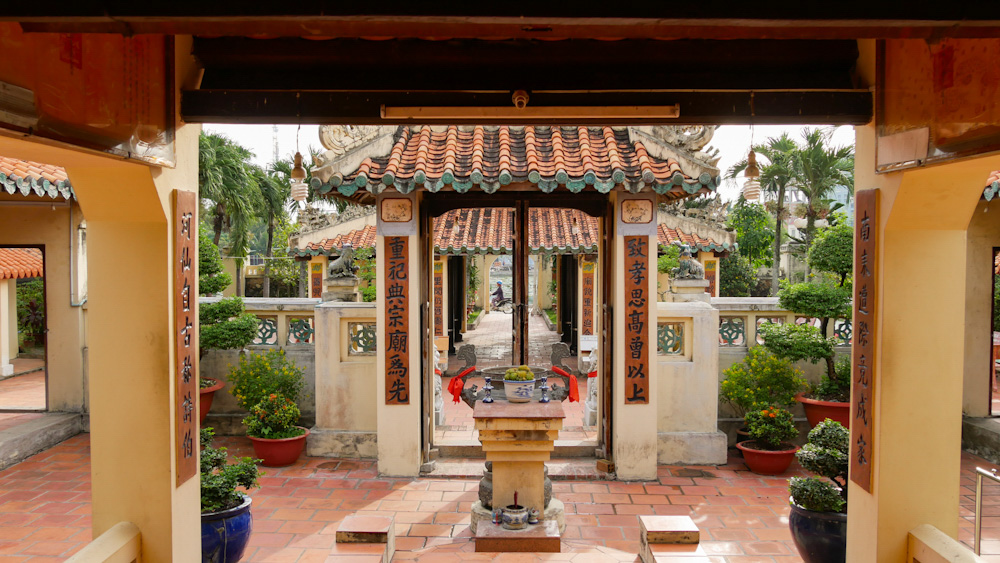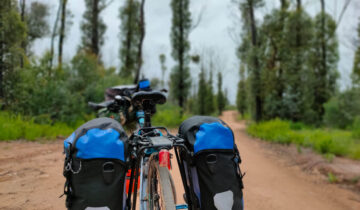As you might have guessed from the last few posts, I’m a bit of a fan of Ha Tien. It’s a small and under-appreciated town right up on the border with Cambodia, and also the first stop in my DIY Mekong Delta bike tour.
Ha Tien some particularly lovely temples, and a self-guided ‘temple tour’ is a very pleasant excuse to meander about the leafier parts of town.
Even if you aren’t normally a ‘temple person’ it would be very hard not to be charmed by sheer pleasantness and the distinct character of these sites.
With a bicycle or scooter, it’s an easy trip across the bridge to the the Ngoc Tien monastery and the sleepy country lanes nestled around the To Chau hill. Jump ahead to the Ngoc Tien loop.
Map
The Mac dynasty reigned over this area for most of the 18th century, and founder Mac Cuu is quite the local celebrity.
Temples in town: First stop, hill of tombs
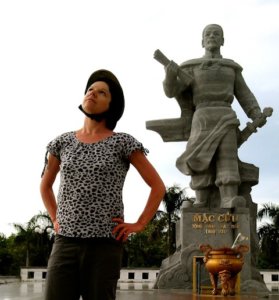
Perhaps it’s my Scottish heritage but I feel a certain connection with the bloke.
In any case, it seems fitting that my temple tour kicks off with a climb to the hill of tombs, where Mac’s remains have pride of place.
The site as a whole has a rambling, traditional and quietly un-organised feel to it that’s rather appealing. The first stop is a pretty pagoda at street level; from there, winding stone pathways lead you up and around the hillside.

The tombs are quite spread out, and the mottled stones and lush vegetation create an atmospheric setting.
At the top, the path passes Mac Cuu’s tomb and continues down the other side. Cross the road, and you’ll find yourself at a large lotus pond and the Phu Dung pagoda.
Phu Dung is not particularly notable and could be skipped, but does feature a lovely ornate shrine flanked by peacocks and phoenixes.
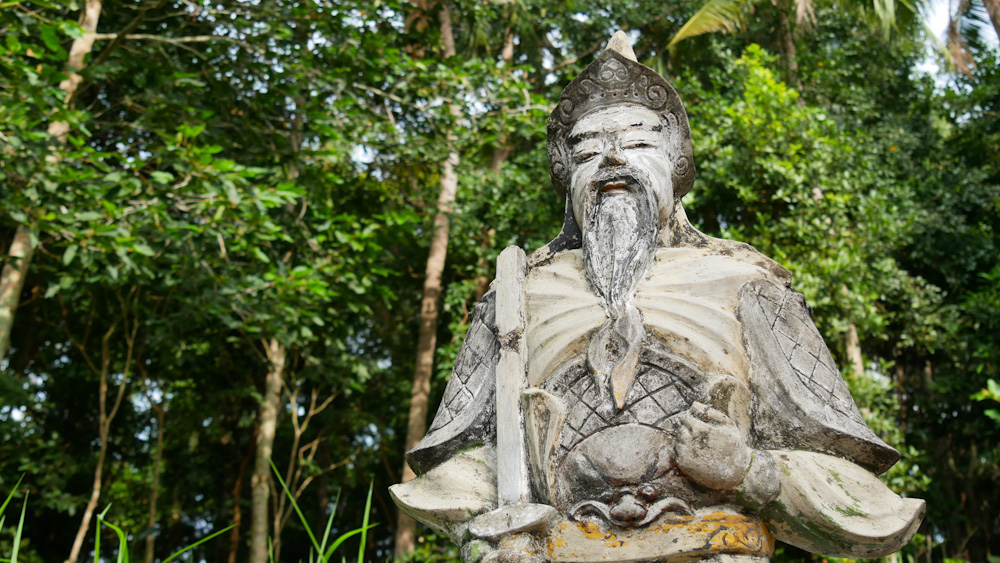
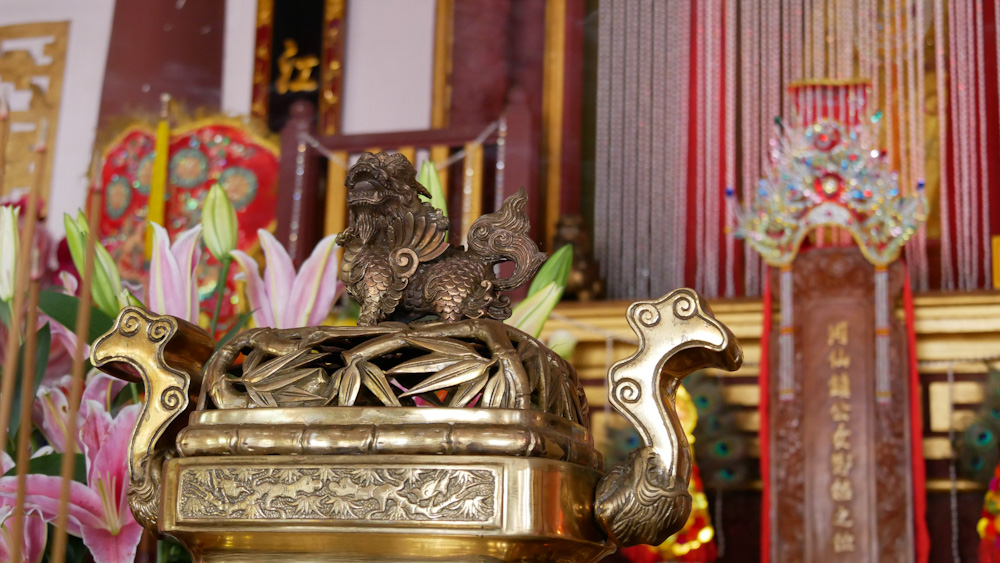
Tam Bao
Just down the road is Tam Bao, Ha Tien’s largest temple. A long driveway is lined with gaudy (and slightly tacky) statues, though the interior is far more sober.
The real reason for visiting Tam Bao, however, is the lush rear garden, a kind of Buddhist fairyland.
It’s easy to imagine these jolly figurines coming to life and frolicking around at night while nobody’s looking.
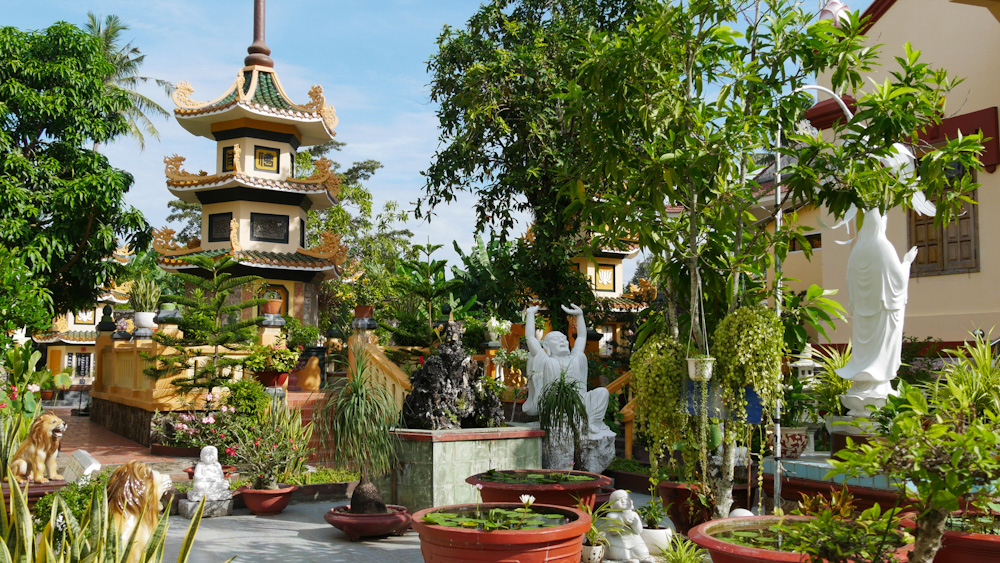
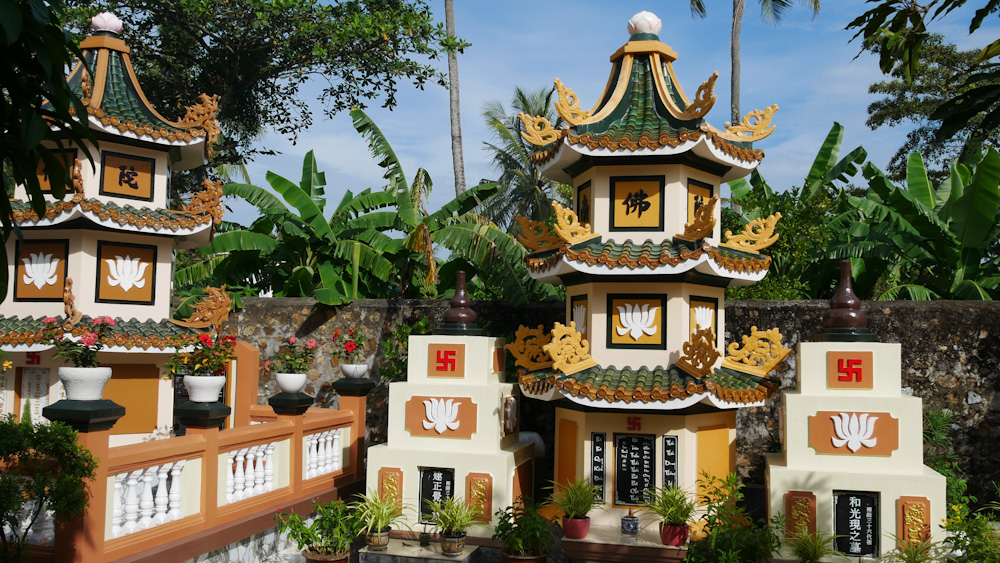
Phat Da
Phat Da is a relatively new Zen Buddhist temple that you are unlikely to find mentioned in any visitor guides.
Despite that, it is my pick of the temples to visit. Cool and serene, Phat Da has a pared back, elegant aesthetic that feels very peaceful.
Much of that has to do with the presence of several wind chimes, which fill the air with ambient sounds.
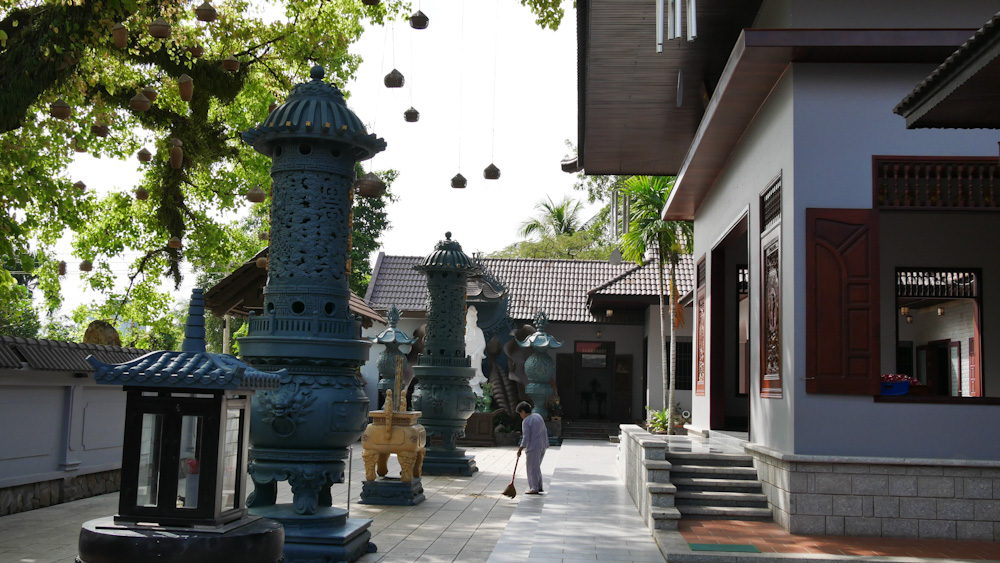
The temple becomes even more magical during the evening. At around 6pm, dozens of bamboo lanterns are illuminated and the large bell is continuously sounded.
Even if you have been here during the day it is well worth coming back for.
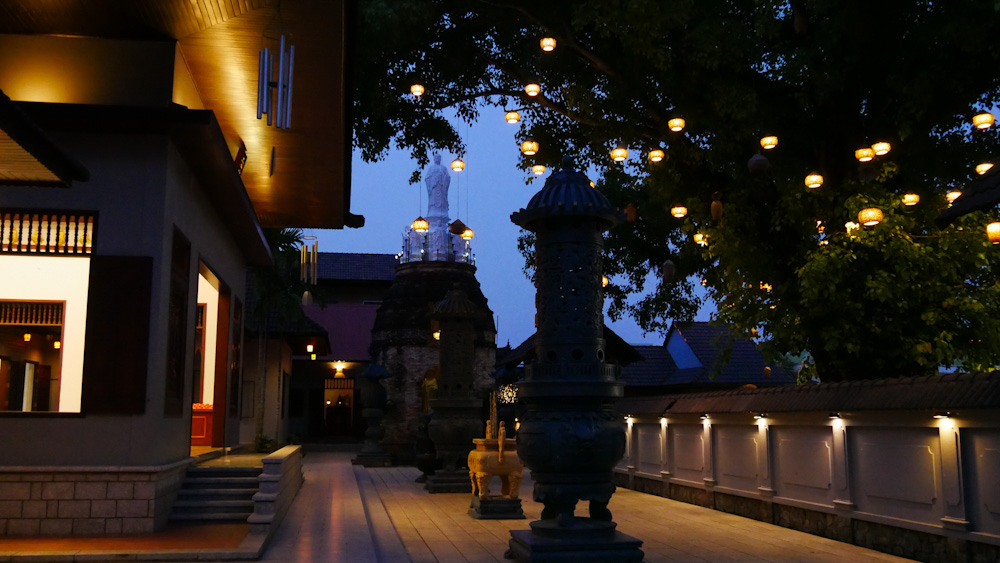
Temple snacks
On my daytime visit, I came across a lady making wafer-thin waffles over a hot plate. Turns out they are coconutty and delicious.
In fact, they go very nicely with a refreshing iced coffee from a stall conveniently located across the road.
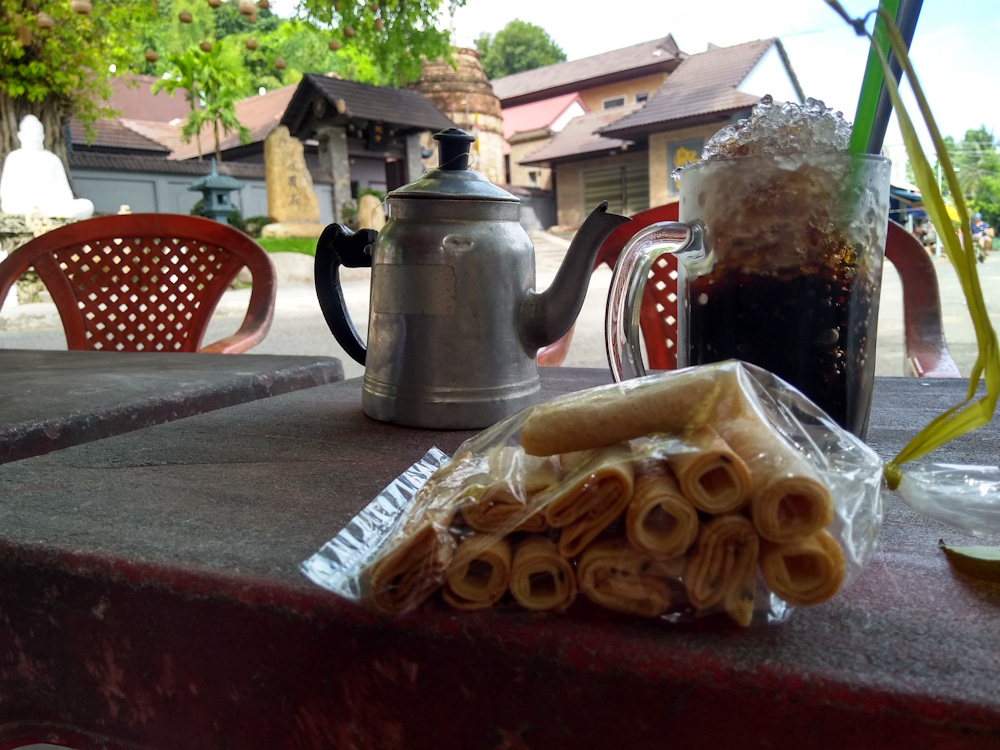
Ngoc Tien Monastery loop
Squat and earthy, Ngoc Tien occupies a sizeable chunk of the hillside, staring back across the water.
A visit to the monastery and surrounding countryside is an ideal way to cap off a tour of a day at Ha Tien’s temple.
Time it right, and you can end the ride with a visit to Ha Tien’s local sunset point. The tranquil and idyllic countryside, tucked away between the hills, the highway and the water, is also particularly lovely in the afternoon light.
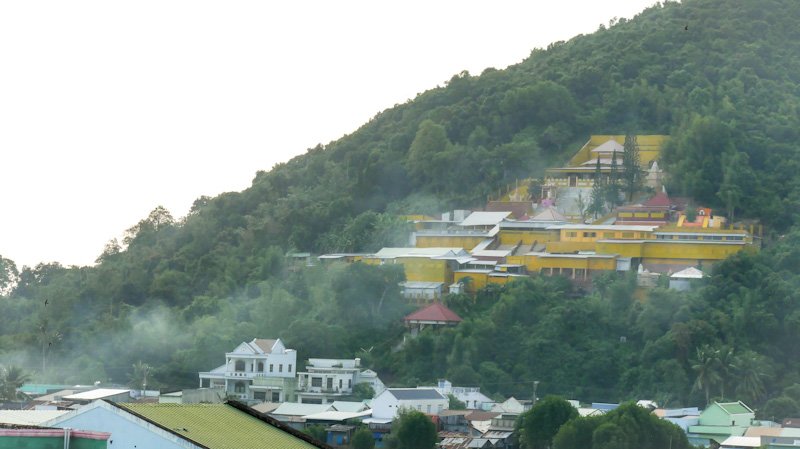
Is Ngoc Tien worth visiting?
As a destination, I reckon Ngoc Tien gets an unfairly bad (or at least lukewarm) rap in visitor guides.
It was built in 1993, enlarging an original (and relatively modern) monastery that was established back in the 70’s.
While nothing special to look from the outside, I found this to be a visually striking location once you’re there. Catch it in the right light, and the weird geometric angles, contrasting colours and rough-hewn staircases are a photographer’s delight.
It’s quite a climb to the top, but the views out across Ha Tien and the surrounding wetlands are worth it.
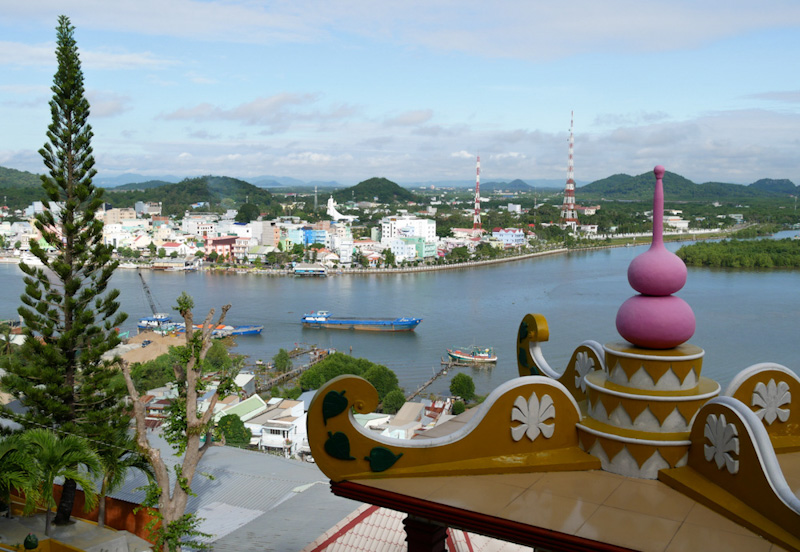
Getting to Ngoc Tien
Following my map, first cross the To Chau bridge.
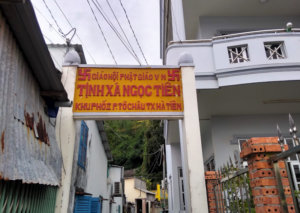
Take the first left and continue past the ferry terminal, passing a string of houses and shops. Look out for this red and yellow sign which marks a small alleyway leading to the entrance.
A steep staircase takes you to the uppermost viewpoint. On the way up you may see humbly-attired residents going about their daily tasks.
Cycling around the back streets of To Chau
If you have a bike, I’d highly recommend following up a visit to the monastery with some exploration of the country back roads nearby.
Unless it’s a weekend (in which case you might find the streets filled with wedding marquees), the pace of life here is gentle indeed. For me, this small piece of idyllic scenery is classic Vietnam..
I had the delightful experience of following along behind a leisurely bicycle vendor sporting a plume of feather dusters. He looked for all the world like a mobile rooster. Unfortunately I wasn’t quick enough to get a photo, but I did catch this colourful fruit cart.
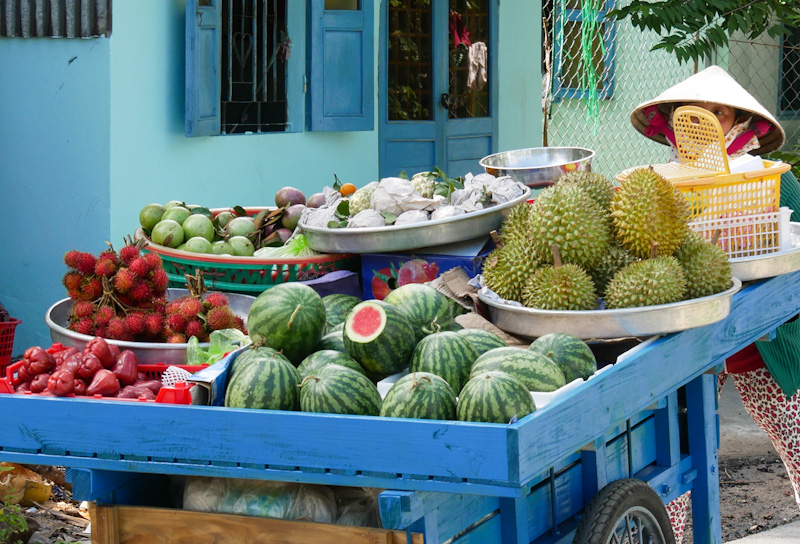
From the monastery, continue along Nam Ho street, turning left when you see a blue archway sign.
Thankfully, the bumpy main road here becomes a smooth concrete path, populated by the odd wandering cow and cluster of homes. There’s an army base here so you may see some smiley young cadets.
The path eventually splits into two branches, both extremely pleasant, and both of which eventually join on to Highway 80.
If you want to loop around, it’s possible here to brave the highway for about 800 metres – but watch for heavy vehicles.
Heading back along Nam Ho, turn left at Duong Cay So 1 and ride along the other side of the hill before heading back over the bridge to central Ha Tien.
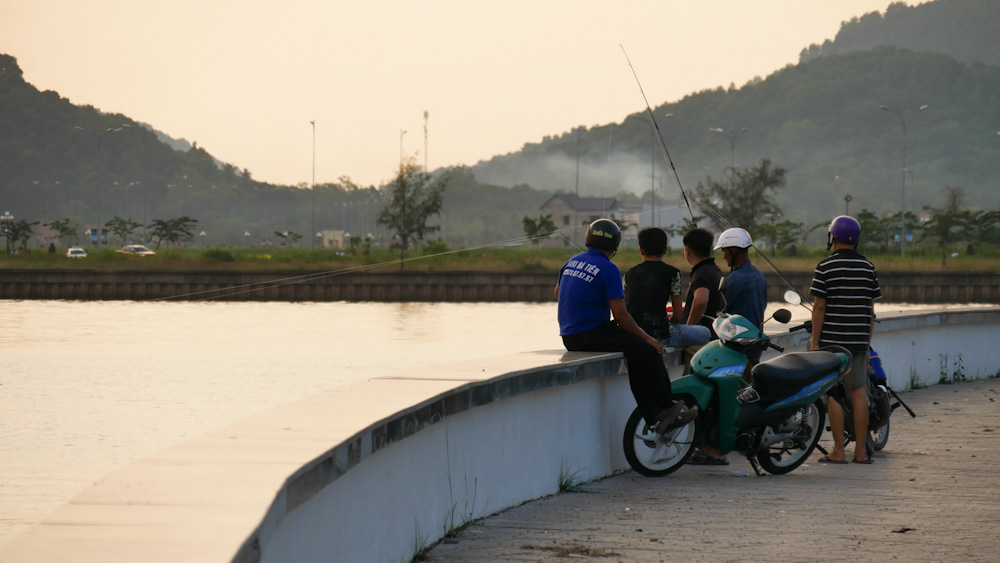
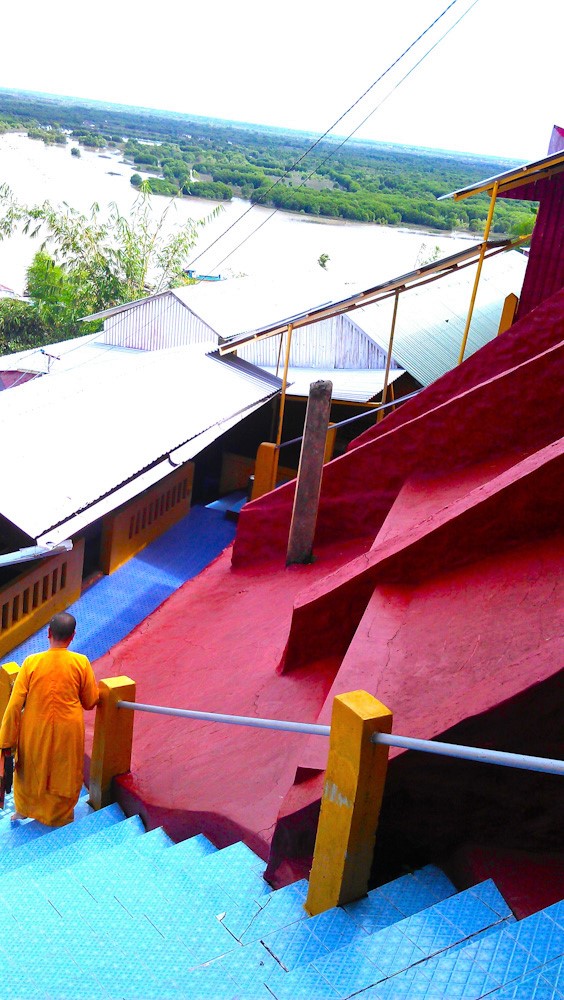
Read also:
Ha Tien countryside rides: four ‘out and back’ loops
Top ten things to do in Ha Tien

